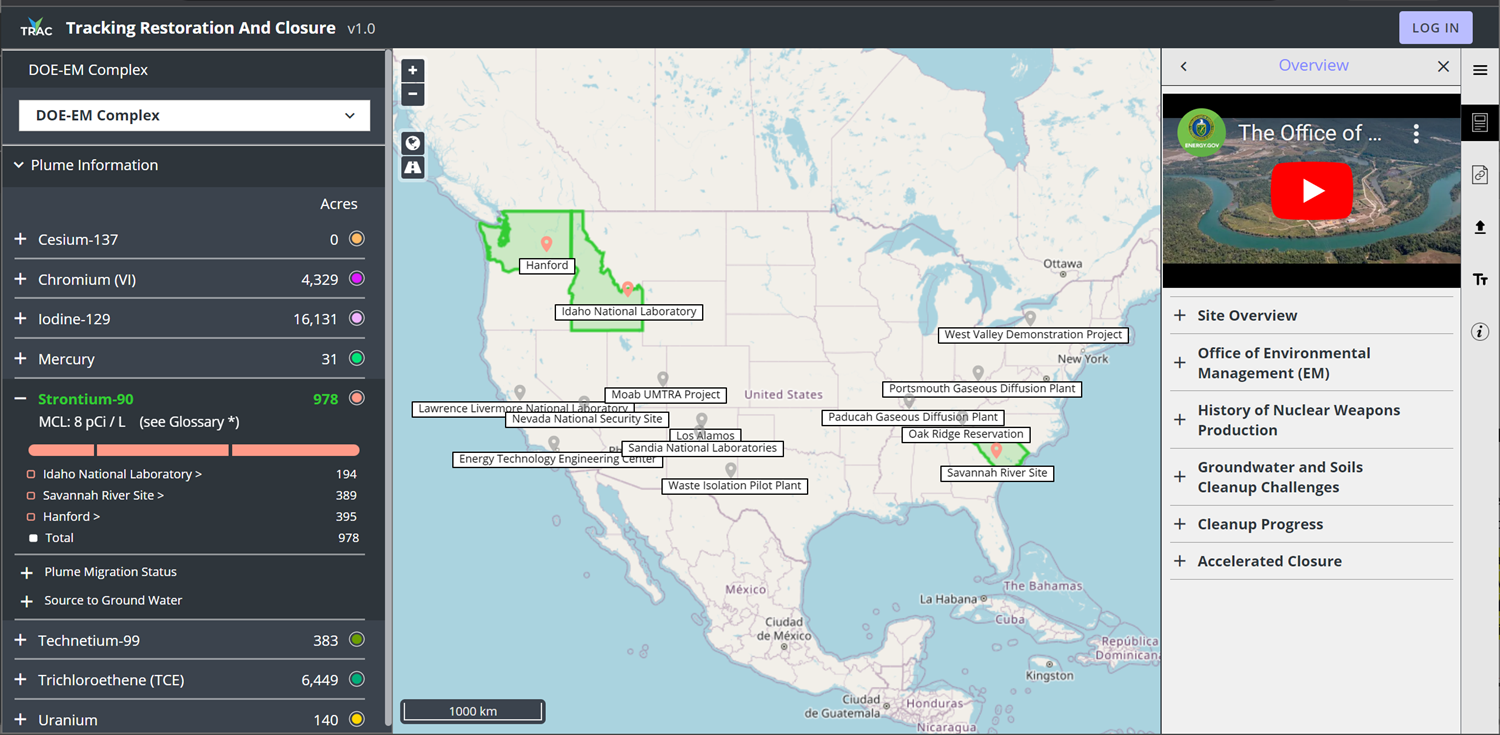TRAC: Tracking Restoration And Closure
The TRAC web tool displays the environmental remediation status—and metrics about progress toward closure—for cleanup sites overseen by the DOE Office of Environmental Management

The Tracking Restoration And Closure (TRAC) tool enables information sharing about and provides transparency into environmental remediation progress at Department of Energy Office of Environmental Management (DOE-EM) sites nationwide.
